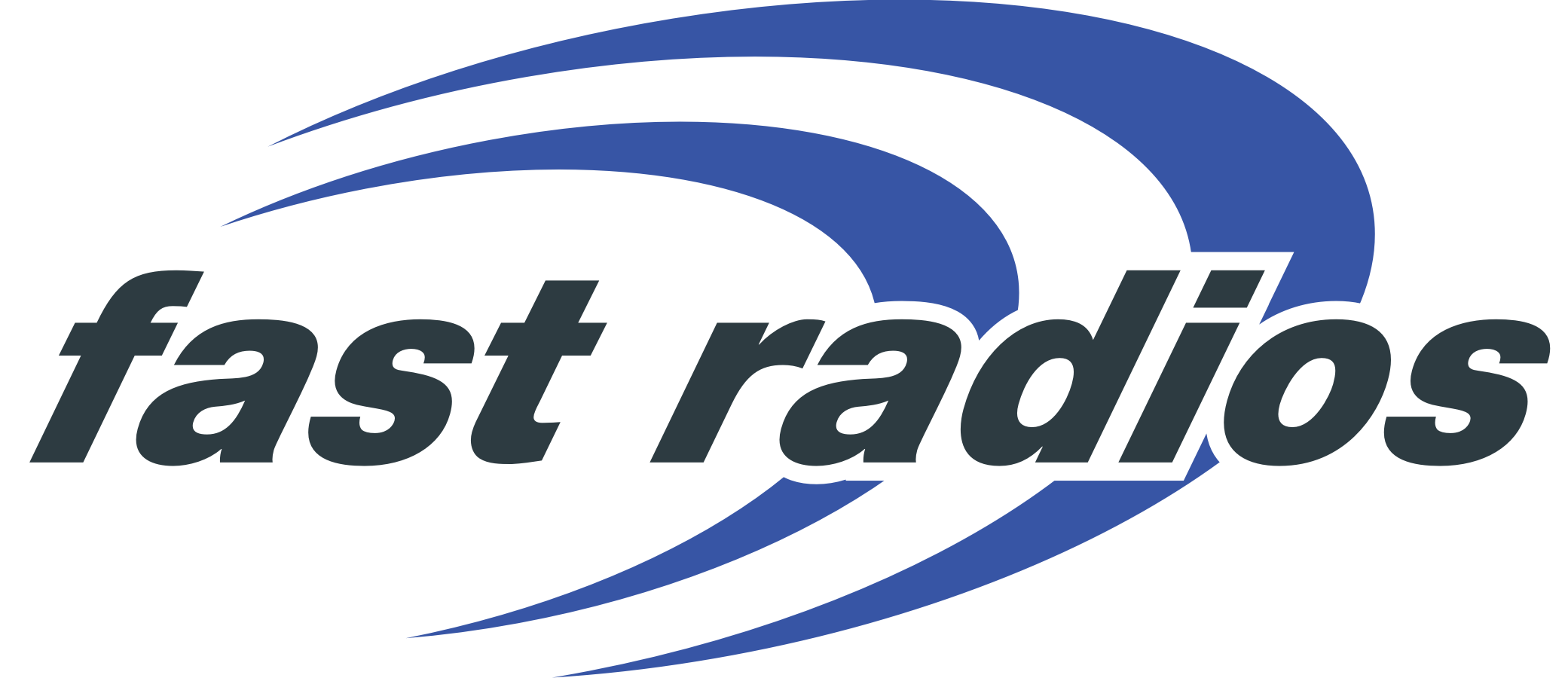
What is the difference between Two-way Radios and Walkie-Talkies?
Two-way Radios and Walkie-Talkies do the same thing, but the terms have significantly different meanings.
Walkie-talkies, as they were called, were first developed for military use during World War II and eventually spread to public and commercial use after the war. They typically look like a telephone handset with an antenna sticking out the top with a built-in speaker that can be heard by the user and anyone in proximity.
Modern walkie talkies still utilize the push-to-talk technology and are available in numerous price ranges – from units sold as toys to more commercial units used for public safety, business or any setting where a portable radio would be necessary. Some walkie talkie models can be made to be very small and depending on the differing use, the equipment varies with consumer use and commercial use.
Commercial walkie talkies – also called commercial two-way radios – have a more rugged construction with metal cases, and often have only a few specific frequencies programmed into them since a given business or public safety agent must often abide by a specific frequency allocation. Commercial two-way radios are programmable by a two=-way radio dealer like Fast Radios. The radios need to be programmed to work with each other.
Consumer walkie talkies, on the other hand, are generally made to be small, lightweight, and capable of accessing any channel within the specified band and the low powered versions that are exempt from licensing requirements can be popular children toys. The FRS radios, or Family Radios Service radios are a good example. If you use an FRS radio you can talk to and hear any other FRS radio in the area.
With the walkie talkie’s development, even the powerful commercial walkie-talkie is limited to only a few watts of power output and handheld communication range is still quite short in open areas. Many radio services permit the use of a repeater (which is a device that increases range and coverage of a walkie talkie) which is usually placed at some high point within the desired coverage area. The repeater listens on one frequency and retransmits on another, so that reliable hand-held to hand-held unit range can be extended to a few score miles (kilometers) or further, using repeaters linked together.
Walkie-talkies (generally known as HTs or “handheld transceivers” by radio hams) are widely used among amateur radio operators and have become popular with consumers for personal use. Most personal walkie talkies that are sold are designed to be very compact, with buttons for changing channels and other settings on the face of the radio and a short, fixed antenna. Most such units are made of heavy, often brightly colored plastic cases to attract consumers.
Like walkie talkies, commercial two-way radios are handheld transceivers (they send and receive radio frequency signals) and utilize the push-to-talk system.
While commercial 2-way radios or hand-held portable two-way radios are often called walkie-talkies or handy-talkies, don’t confuse them with the cheaper model 2-way radio “walkie-talkies”.
Two-way radios are available in mobile and stationary base configurations. An example of a two-way radio that both transmits and receives at the same time (or full duplex) is a mobile phone or cellular telephone, which uses two different radio frequencies to carry the two directions of the conversation simultaneously.
However, there are differences between using a cellular telephone and using a two-way radio. Commercial two-way radios are an excellent way to maintain communication and keep your business operating efficiently for the following reasons:
Two-way radios do not rely on cell towers as the cell phone. They operate radio to radio independently from any other system.
Two-way radios do not rely on telephone lines which can overload or fail in bad weather, crisis or emergency situations.
If you prepare, 2-way radios can operate without any electricity. Communication within your own team of people can continue radio to radio within a fixed location.
Specific frequencies are often programmed into them for a given business by a specific frequency allocation.
Without getting too technical for this article, some other considerations to note with commercial 2-way radios:
There is an array of two-way radio technologies, systems, and types.
There are families of radio types and each family has differing sub-groups and specific radio models.
In some cases, data in communication over two-way radios can be analog or digital.
Commercial 2-way radios consist of a more rugged construction and are often used by policemen, firemen, emergency medical teams, security personnel, construction teams, military, college campus security, etc.
Visit our two-way radio product pages for more information and details on radios from Hytera America, ICOM America, Motorola, Vertex and Kenwood commercial two-way radios.
Receive our FREE Two-Way Radio Guide for a FREE Trial on commercial two-way radios!
Don’t mobile phones make two-way radios obsolete?
Try This on A Cell Phone
Sometimes we hear from customers that believe cell phones might be an alternative to two-way radios. They think they can combine the ability to make and receive phone calls with the walkie talkie feature that many cell phone companies now offer.
Don’t get trapped!
Here are a few things you should know before you commit your company to lengthy and expensive cell phone contracts:
- Two-way radios are easier to use. Push a button and start talking.
- The right two-way radios will provide better reception in hard to reach areas of your property. Cell phones are prone to dead spots or areas of poor reception and transmission. Have you ever noticed how people must go outside the mall or grocery store to make or receive a call on their cell phone?
- Two-way radios equipped with a telephone interconnect can make and receive telephone calls through your existing telephone equipment and carrier for no additional monthly charge.
- You can immediate reach everyone with two-way radios. Cell phones require a separate number to call each person individually. Having to call everyone individually is completely inappropriate in an emergency.
- Two-way radios equipped with selective calling let you speak privately with one person at a time or with everyone at once. Two-way radios equipped with selective calling also have a caller id display, so you know who you are talking to.
- Two-way radios (intrinsically safe versions) can be used in highly flammable or explosive areas without fear of sparking.
- The man down option available on many two-way radios will send a distress signal when a worker remains horizontal for more than 30 seconds.
- Our two-way radios come with two, three- and four-year parts and labor warranty options. Cell phones usually have warrantees of less than one year.
- After several recent natural disasters, many people have learned that two-way radios continue to work in an emergency when cell phones and even land lines become useless.
- Two-way radios (properly equipped) are available for use in high noise areas, dusty, dirty or wet environments, when hands free operation is necessary, when security is paramount or covert communications are required.
Two-way radios are easy to use, are loaded with options, are effective in all locations and have no monthly fee or service contract.
Try that on a cell phone.
How does the Free Trial work?
Fast Radios will send you a pair of new commercial two-way radios to test at your location for a week. One of our radio experts will spend a few minutes on the phone helping you determine which make and model radio makes the most sense for you to test given your specific application and situation.
We ask for a credit card to process an authorization for the value of the equipment we are sending you. We don’t take the funds; we only process a “hold” on the card. It is like checking in to a hotel.
Then we ship the radios to you with UPS Ground service. You get a confirmation copy of your trial order in your e-mail and a Trial Invoice with the UPS tracking number, part numbers, items descriptions and pricing when your order is shipped. You are not obligated to pay the invoice unless you don’t return the equipment.
The radio expert you spoke with to set up the trial will be available to answer any questions that come up during your trial.
If you choose to return the equipment, we will e-mail you a return authorization form to put in the box. The return shipping cost is your responsibility. If you choose to keep the equipment you can either leave the charge on your credit card or process a purchase order or company check for payment.
Do you help me with programming the radios and what frequencies to use?
This is a VERY IMPORTANT point. Two-way radios must be programmed to the same frequency information for them to work with each other. We will help you sort through the programming options available, so you get a completely custom designed radio system for your organization. Our programming department keeps a record of what they put in your radios so you can easily add radios to your system later.
What about a license from the FCC?
Many customers tell us they want to avoid the FCC license process. Fast Radios has packages and bundles that include free FCC licensing so there is no extra cost to you.
Do you have replacement batteries for two-way radios?
You get Free UPS Ground shipping when you order two or more replacement batteries at Fast Radios. We stock and sell two-way radio batteries for over 1000 different radio models. We offer the original equipment manufacturer’s replacement batteries as well as aftermarket batteries. The aftermarket two-way radio batteries we offer are often better and less costly batteries.
Here is an example:
7.4v 2000 mAh Lithium Ion (Li-Ion) battery for the TC-508, TC-518 & TC-580. Gold plated charging contacts and rugged poly carbonate-ABS blended case. Japanese cells inside.
This is a 2000 mAh battery with Japanese cells – not a 1300 mAh battery you may see advertised at crazy-low prices online.
Watch out for cheap batteries that use cheap cells. Many times, they do not fit well on the radios.
(This battery replaces the 1650 mAh BAHY-BL1719 battery that comes with the radio new).
We can also help you with in vehicle chargers, bank chargers, solar chargers, emergency battery supplies and 220-volt chargers.
Do you have audio accessories?
You get Free UPS Ground shipping when you order two or more audio accessories at Fast Radios. We offer lapel microphones, shoulder microphones, headsets and other audio accessories for over 1000 different radio models.
Audio accessories let you:
- hear better
- talk longer
- communicate further
- provide more privacy
- extend the life of your radio equipment
Do you have the new radio that use cell phone towers?
Yes. Both Icom America and Hytera America offer Push-to-Talk over cellular. Call for the details or submit the request form.
What about service and repairs?
Fast Radios has a trade-in program for older radios and several repair facilities for newer radios that are under warranty or have physical damage or liquid damage that isn’t a warranty repair.
How do I get a radio repaired?
Call or e-mail us with the make, model and serial number of the radio giving you problems. Include the problem so we can take a shot at fixing it over the phone or through e-mail. If the radio needs to come in for repair, we will e-mail you a return authorization form for repair and ask you to print it and put a copy in the box with your radio. You ship the radio to our address on the form and we will get it fixed and shipped back to you.
If you need a loaner during the repair, we will send you on if that radio serial number came with our full service.


